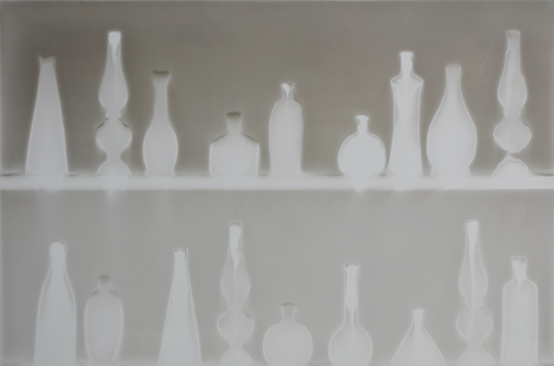
The Office at Guy Pieters Gallery
Claudio Parmiggiani
Delocazione
| Preview cocktail | 05.08.22 01:00 |
| Runtime | 06.08.22 05.09.22 |
Born in 1943 in Luzzara (Emilia), Italy
Claudio Parmiggiani began his artistic activity in the 1960s. Parmiggiani is one of the major artists of our time, but also one of the most discreet. Prestigious museums around the world hold his work: Centre Pompidou and Fondation Cartier Paris, Galleria d’Arte Moderna Bologna, Museum of Modern Art Tel Aviv, Stedelijk Museum Amsterdam, Musée d’Art Moderne Montreal, Musée d’Art Moderne Marseille, Musée des Beaux-Arts Lyon, Strasbourg, Mamco Geneva etc. His gallery appearances are rare.
“I have never felt like an “artist”; I have always felt like a man, with the elementary but vital need to fill my eyes with images, pure images, to invent images. Images that have the power to transmit that strength that serves to give meaning to art, at least to mine, to give meaning to the days, that serve to resist, to live and that allow us to suffer less” (Extract from an interview published in cat. Parma; expanded version with D. Biasin of an interview with E. Mondello broadcast on 17 September 1995 by RAI3). “The alphabet of painting belongs neither to the word nor to logical thought. Art does not need any answers; it is a real question that wants to remain so. To begin to speak about one’s own work means to begin to be silent because the work is an initiation into silence” (The Alphabet of Painting/Extract from Stella Sangue Spirito, Claudio Parmiggiani, 1995)
“It has been said of Parmiggiani that he had contemporaries in every era, Christian Bernard, Director of Mamco Art Press, April 1996 “Outside the categories established by Italian art critics, this artist and poet, born in 1943 in Emilia, has always kept away from the straitjacket of artistic concepts and commercial dynamics. Instead, his art has focused on the almost romantic image of a spiritual phenomenon.
Parmiggiani works on recurring themes (...). He made his mark in the early 1970s, notably through his original use of pure pigments, lampblack, or even incandescent elements, and above all through his use of casts of ancient sculptures (...). The physical and symbolic evocations of his works seek to establish a contemporary dialogue and not to make historical or scholarly references.
His work is concerned with themes of absence, the inevitable passage of time, fragmentation and silence. Over the course of his career, Parmiggiani has maintained a radical stance and singular vision, interrogating the power of memory and shared history, as well as the dual nature of time, with recurring motifs such as dust, fire, glass, shadows and empty space. His practice demonstrates a profound interest in our artistic, historical and moral past. Deeply personal meditations on life and death, the power of reflection and feelings of the sacred are realised in concrete objects, photographic and painted images, and in his signature ‘Delocazione’. Inaugurated in 1970, these haunting works use powder, soot and fire to create shadows and imprints on paper and board, resulting in a sense of absence while at the same time making manifest an unmistakable human presence, tangible, yet not corporeal.

